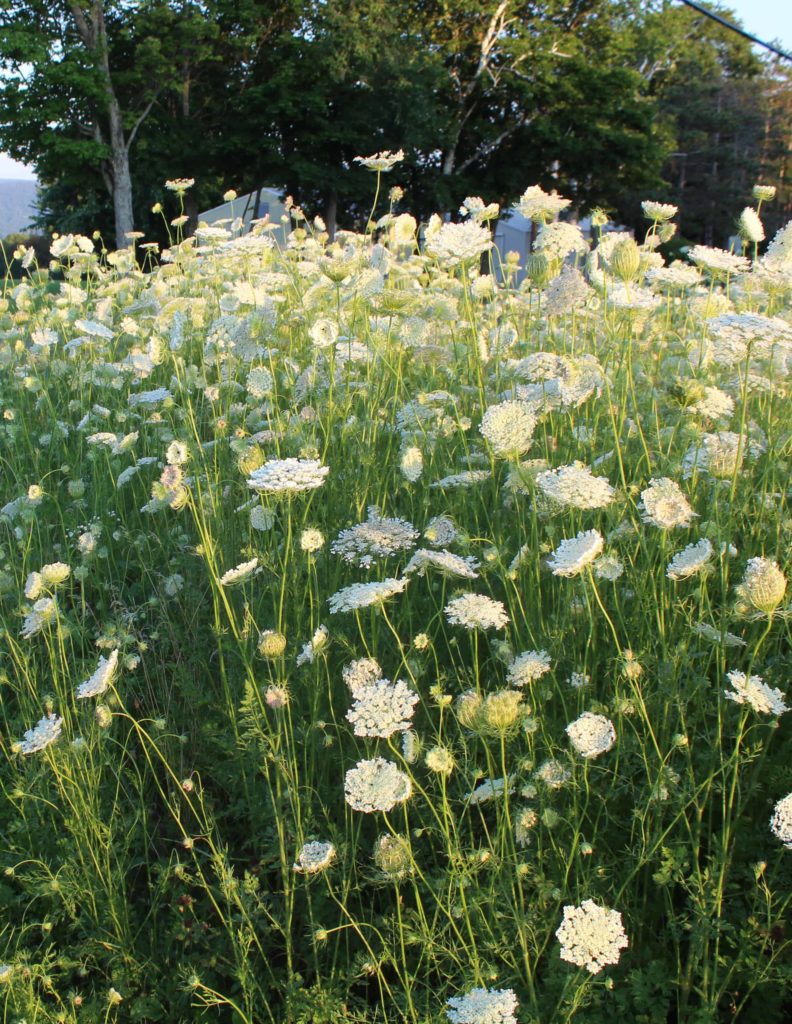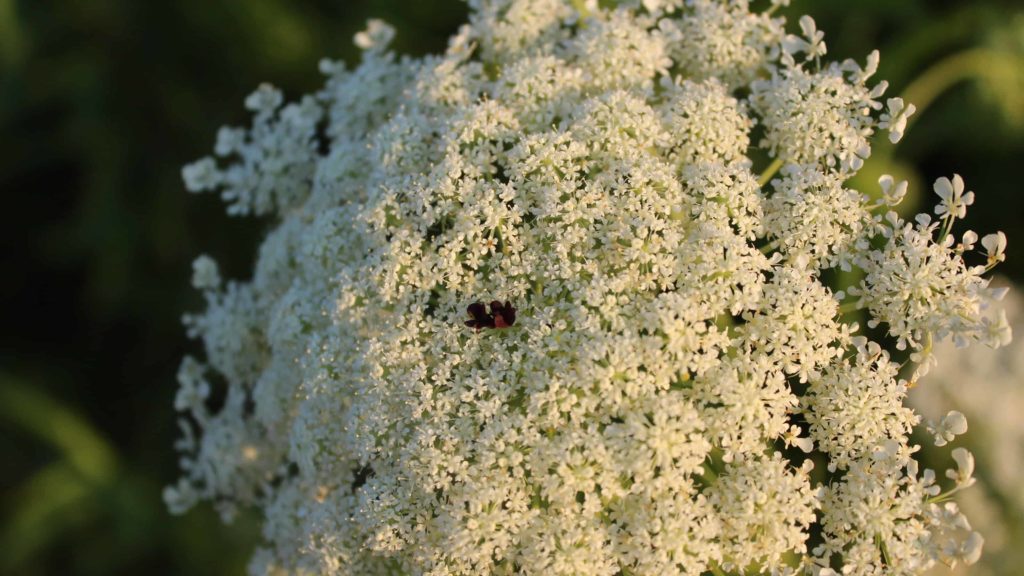What is more spectacular than the color combination of brilliant yellow of dyers chamomile and pure white Queen Anne’s lace in a back-yard garden? Especially when nature sees to it that both are seeded together, with no help from the gardener.
Just the sight of the two flowers together is enough to sway one’s thinking that the wild-carrot or Queen Anne’s lace isn’t a weed after all. At least in my garden it doesn’t live up to being a plant out of place. And in August this intricate white and green immigrant is peaking along roadways and in pastures.





As intricate as anyone would dare ask flower to be, its vitals are astonishing. The flower head itself measures about three inches across and is described as a compound umbel, meaning it consists of seventy-five smaller umbels containing 2,500 tiny “florets.” Each floret is 1/8 of an inch across, and it is a perfect flower, with sepals, pistil, stamens and five petals. Count if you like: One complete flower head totals 12,500 petals, plus or minus.
In the days of Queen Anne (1702 to 1714), fine needle work was the pastime for those of means or leisure. When Queen Anne arrived in England from Denmark as the bride of King James 1, the wild carrot was new to the gardens held by royalty. And apparently in this Queen’s court, she challenged her ladies in waiting to fashion a lace as fine as the flower itself. So today we name after the winner, Queen Anne herself, who secretly took part in the contest.
When the flowers dry up in the autumn, they resemble a bird’s nest, some say, and the plant is sometimes called “bird’s nest.” Another name, mostly used by dairy farmers, is “devil’s plague,” because when milking cows ate it they would give disagreeable-tasting milk.
Some believe the wild carrot is an escape or offspring of the cultivated (eating) carrot; others believe the opposite, while still others believe both are a separate species. I have no opinion, but don’t go testing to see if the wild variety is as delicious as garden-fresh or store-bought bright orange pointed-at-one-end produce. It isn’t, and two members (of the about 50 genera) in the Carrot or Parsnip family are poisonous.
One way to be sure you are looking at Queen Anne’s lace is that the umbels often have a dark purple flower near the center, or sometimes several. No one knows exactly why, although superstition has it that Queen Anne pricked her finger and a drop of blood stained the lace.
And the white flowers can take on color, with outside help. When I taught nature classes at the Berkshire Museum we had a Junior Naturalist Club, and members sometimes worked on simple experiments or projects. One was to set the flowers in several tall glass or plastic soda bottles (20 FL OZ or less) and add a strong solution of water and food coloring to each one.
Feel free to try it at home, but look closely to be sure there are no ticks on the stems or flower heads. Pick a bunch of Queen Anne’s Lace flowers with at least 12-inch stems, trim each stem at the bottom, and set them in a bottle with tinted water. Check in about eight hours to see what colors the blossoms have become.

